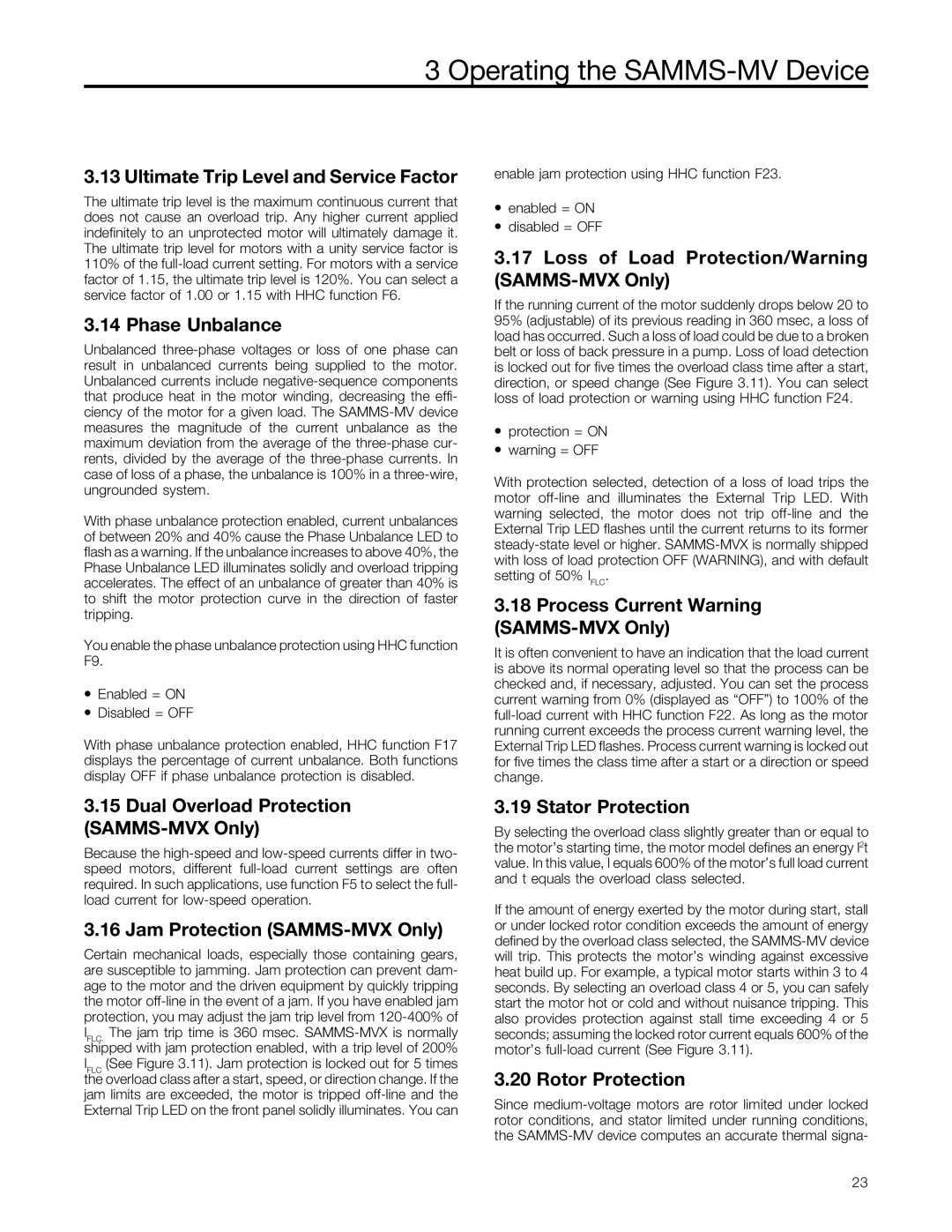3 Operating the SAMMS-MV Device
3.13 Ultimate Trip Level and Service Factor
The ultimate trip level is the maximum continuous current that does not cause an overload trip. Any higher current applied indefinitely to an unprotected motor will ultimately damage it. The ultimate trip level for motors with a unity service factor is 110% of the
3.14 Phase Unbalance
Unbalanced
With phase unbalance protection enabled, current unbalances of between 20% and 40% cause the Phase Unbalance LED to flash as a warning. If the unbalance increases to above 40%, the Phase Unbalance LED illuminates solidly and overload tripping accelerates. The effect of an unbalance of greater than 40% is to shift the motor protection curve in the direction of faster tripping.
You enable the phase unbalance protection using HHC function F9.
∙Enabled = ON
∙Disabled = OFF
With phase unbalance protection enabled, HHC function F17 displays the percentage of current unbalance. Both functions display OFF if phase unbalance protection is disabled.
3.15Dual Overload Protection (SAMMS-MVX Only)
Because the
3.16 Jam Protection (SAMMS-MVX Only)
Certain mechanical loads, especially those containing gears, are susceptible to jamming. Jam protection can prevent dam- age to the motor and the driven equipment by quickly tripping the motor
enable jam protection using HHC function F23.
∙enabled = ON
∙disabled = OFF
3.17Loss of Load Protection/Warning (SAMMS-MVX Only)
If the running current of the motor suddenly drops below 20 to 95% (adjustable) of its previous reading in 360 msec, a loss of load has occurred. Such a loss of load could be due to a broken belt or loss of back pressure in a pump. Loss of load detection is locked out for five times the overload class time after a start, direction, or speed change (See Figure 3.11). You can select loss of load protection or warning using HHC function F24.
∙protection = ON
∙warning = OFF
With protection selected, detection of a loss of load trips the motor
3.18Process Current Warning (SAMMS-MVX Only)
It is often convenient to have an indication that the load current is above its normal operating level so that the process can be checked and, if necessary, adjusted. You can set the process current warning from 0% (displayed as “OFF”) to 100% of the
3.19 Stator Protection
By selecting the overload class slightly greater than or equal to the motor’s starting time, the motor model defines an energy I2t value. In this value, I equals 600% of the motor’s full load current and t equals the overload class selected.
If the amount of energy exerted by the motor during start, stall or under locked rotor condition exceeds the amount of energy defined by the overload class selected, the
3.20 Rotor Protection
Since
23
